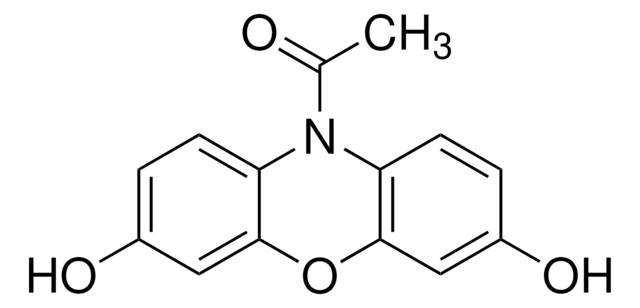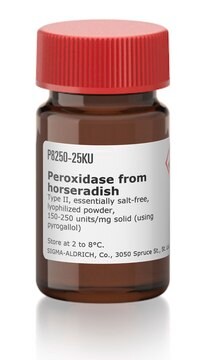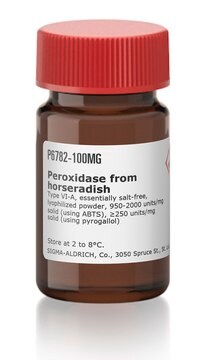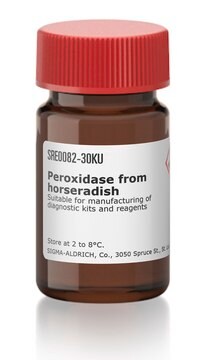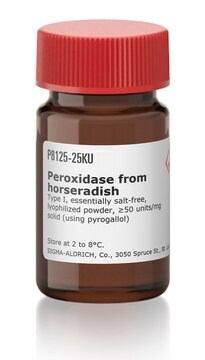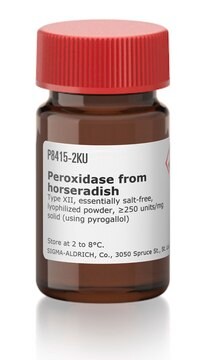10108090001
Roche
Peroxidase (POD)
grade I, from horseradish
Sinónimos:
POD, peroxidase
About This Item
Productos recomendados
biological source
horseradish
Quality Level
form
lyophilized (salt-free)
specific activity
≥250 units/mg protein (At 25 °C with guaiacol and H2O2 as the substrates.)
250 U/mg
packaging
pkg of 25,000 U
manufacturer/tradename
Roche
optimum pH
6.0-6.5
shipped in
wet ice
storage temp.
2-8°C
General description
Application
Biochem/physiol Actions
Quality
Purity number: approximately 3.0 (A403/A275)
Preparation Note
Working solution: PBS (phosphate buffered saline) or water (starting concentration 20 mg/ml).
Reconstitution
Other Notes
signalword
Danger
hcodes
Hazard Classifications
Resp. Sens. 1 - Skin Sens. 1
Storage Class
11 - Combustible Solids
wgk_germany
WGK 1
flash_point_f
Not applicable
flash_point_c
Not applicable
Certificados de análisis (COA)
Busque Certificados de análisis (COA) introduciendo el número de lote del producto. Los números de lote se encuentran en la etiqueta del producto después de las palabras «Lot» o «Batch»
¿Ya tiene este producto?
Encuentre la documentación para los productos que ha comprado recientemente en la Biblioteca de documentos.
Los clientes también vieron
Nuestro equipo de científicos tiene experiencia en todas las áreas de investigación: Ciencias de la vida, Ciencia de los materiales, Síntesis química, Cromatografía, Analítica y muchas otras.
Póngase en contacto con el Servicio técnico


